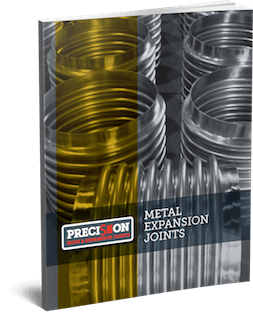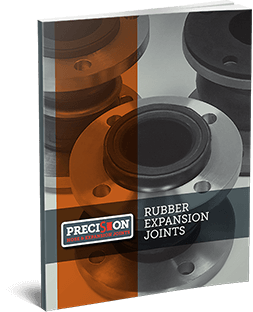Recommended Metal Expansion Joint Installation Instructions
Metal Expansion Joints and Bellows are designed to absorb a specified amount of movement by flexing of the thin-gauge convolutions. If proper care is not taken during installation, it may reduce the cycle life and the pressure capacity of the expansion joints. This could result in an early failure of the bellows element or damage the piping system and lead to costly repairs.
The following metal expansion joint installation instructions are included to avoid the most common installation errors. When in doubt about installing metal expansion joints, contact the manufacturer for clarification before attempting to install the expansion joint.
HOW TO CORRECTLY INSTALL METAL EXPANSION JOINTS
- Inspect for damage during shipment, i.e, dents, broken hardware, watermarks on the carton, etc.
- Store in a clean dry area where it will not be exposed to heavy traffic or damaging environment.
- Use only designated lifting lugs.
- Make the piping systems fit the expansion joint. By stretching, compressing, or offsetting the joint to fit the piping, it may be overstressed when the system is in service.
- It is good practice to leave one flange loose until the expansion joint has been fitted into position. Make necessary adjustments to the loose flange before welding
- Install joint with an arrow pointing in the direction of flow.
- Install single van Stone liners pointing in the direction of flow. Be sure to install a gasket between the liner and Van Stone flange as well as between the mating flange and liner. With telescoping Van Stone liners, install the smallest I.D. liner pointing in the direction of flow.
- Remove all shipping devices after the installation is complete and before any pressure test of the fully installed system.
- Remove any foreign material that may have become lodged between the convolutions.
- Refer to EJMA Standards for proper guide spacing and anchor recommendations.
INCORRECT WAYS TO INSTALL METAL EXPANSION JOINTS
- Do not drop or strike the carton.
- Do not remove shipping bars until installation is complete.
- Do not remove any moisture-absorbing desiccant bags or protective coatings until ready for installation.
- Do not use hanger lugs as lifting lugs without the approval of the manufacturer.
- Do not use chains or any lifting device directly on the bellows or bellows cover.
- Do not allow weld splatter to hit unprotected bellows. Protect with wet chloride-free insulation.
- Do not use cleaning agents that contain chlorides. Do not use steel wool or wire brushes on bellows.
- Do not force-rotate one end of an expansion joint for the alignment of bolt holes. Ordinary bellows are not capable of absorbing torque.
- Do not hydrostatic pressure test or evacuate the system before the installation of all guides and anchors.
- Pipe hangers are not adequate guides.
- Do not exceed a pressure test of 1 1/2 times the rated working pressure of the expansion joint.
- Do not use shipping bars to retain thrust if test prior to installation.
By following our metal expansion joint installation instructions, you can maximize the performance and life of the product. For custom-built metal expansion joints or support, contact Precision Hose & Expansion Joints. We are here to help you and ship our products both domestically and internationally.






